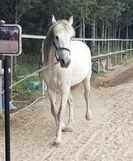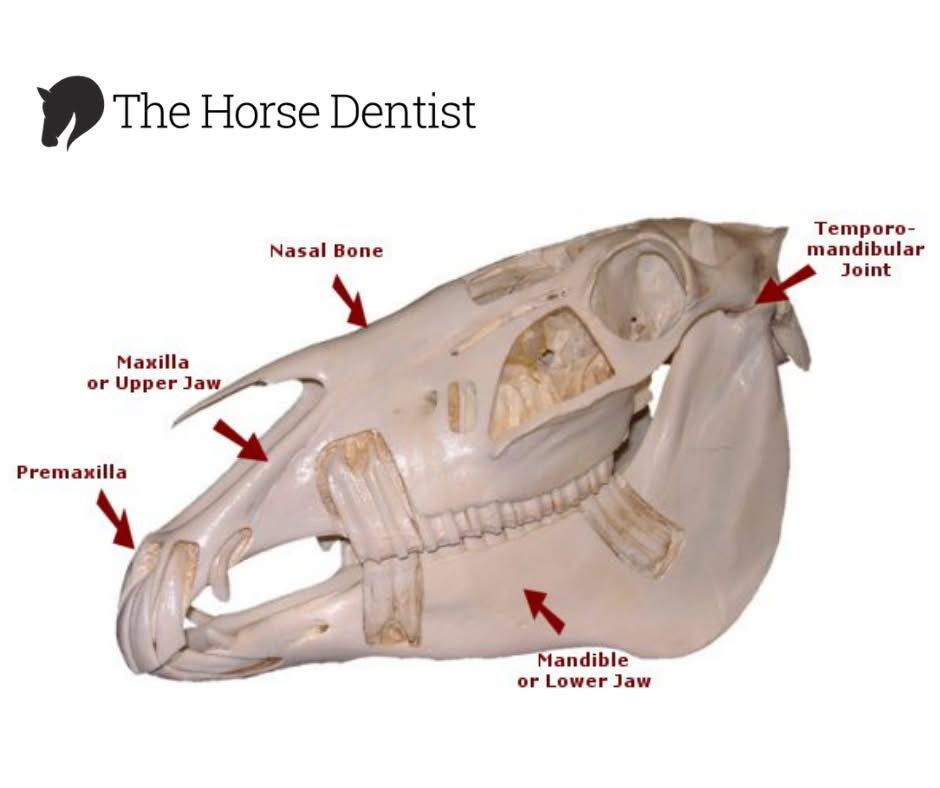
Occlusion to the Hoof: Exploring the Link Between Equine Dental Abnormalities, Postural Compensation, and Hoof Capsule Morphology
Occlusion to the Hoof: Exploring the Link Between Equine Dental Abnormalities, Postural Compensation, and Hoof Capsule Morphology
Stockley. L., Madden. N., Caldwell. M.
Scientific Horseshoeing Limited, 116, Newcastle Road, Talke, Staffordshire. ST71SA. Email info@hoofflix.com
Abstract
Equine dentistry is traditionally viewed as a localised discipline, focused on mastication and oral comfort. However, growing biomechanical and neurophysiological evidence suggests that dental malocclusion and temporomandibular joint (TMJ) dysfunction may have widespread effects on equine posture, limb loading, hoof capsule morphology, and ultimately, performance. This review examines the link between dental imbalance and distal limb function through the lens of fascial continuity, neuromuscular coordination, and compensatory gait mechanics. Drawing on equine studies and cross-species research, we explore how dysfunction originating in the head can propagate through the body to distort limb dynamics, alter gait, and reshape the hoof capsule.
1. Introduction
While equine dentistry is commonly separated from orthopedic evaluation in clinical settings, increasing attention is being paid to the whole-horse implications of dental occlusion and TMJ health. In both humans and horses, occlusal imbalance is linked to altered head and neck carriage, compensatory body posture, and disruption of kinetic chain function [De Laat et al., 2015; Iadarola et al., 2021]. These biomechanical compensations can influence hoof-ground interaction, leading to hoof capsule distortion, asymmetrical limb loading, and performance compromise.
This article explores the biomechanical, neurological, and fascial connections between the dental apparatus and the distal limbs, providing a framework for understanding why dental pathology can influence hoof morphology and why farriery intervention should be informed by dental evaluation in certain cases.
2. Neuroanatomical and Fascial Connections
The temporomandibular joint (TMJ) is richly innervated by branches of the trigeminal nerve, a cranial nerve with known influence over proprioception, muscle tone, and postural reflexes [Gross & Mayhew, 2012]. Dysfunction of the TMJ or dental occlusion alters trigeminal input, potentially initiating postural reorganisation via both direct muscle recruitment changes and reflex arc modifications.
Further, the deep front line of equine fascial continuity, as conceptualised by Myofascial Anatomy trains [Myers & Hálasz, 2019], links the TMJ region through the neck, thoracolumbar spine, sacroiliac region, and down to the deep digital flexor tendon and hoof structures. Tension or asymmetry at the cranial end can, therefore, induce compensatory strain patterns throughout the horse’s frame and limbs.
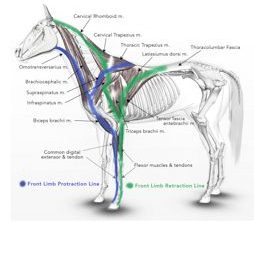
Facial connection between skull and distal limb
3. Postural Adaptation and Compensatory Mechanics
Abnormal dental occlusion in horses has been associated with asymmetrical chewing, head tilting, and TMJ restriction, which often manifest as uneven poll rotation, lateral deviation of the cervical spine, and altered shoulder rotation during movement [Denoix, 2001].
These compensatory adaptations are not benign. A persistently altered head–neck–shoulder relationship shifts the centre of mass, affecting pelvic posture and hind limb engagement. Horses may respond with:
Uneven muscle development across shoulders and hindquarters
High-low syndrome in the forefeet
Canted-in stifles or hock rotation
Altered stride length, toe-dragging, or diagonal gait irregularities
These findings are consistent with human models, where TMJ dysfunction has been linked to pelvic tilt, knee rotation, and even plantar fasciitis [Manfredini et al., 2009; Iadarola et al., 2021].
4. Effects on Hoof Capsule Morphology
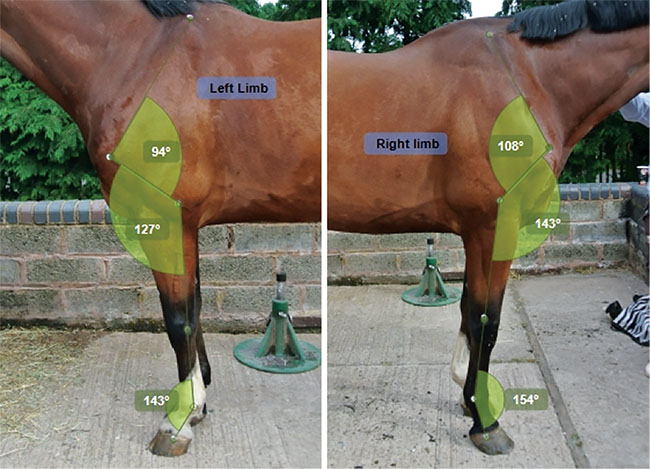
Over time, chronic compensatory loading leads to asymmetric hoof growth patterns, pa
rticularly in the forelimbs. This may present as:
High-low hoof syndrome due to weight shift and torque
Underrun or collapsed heels, especially contralateral to TMJ imbalance
Toe-first landings due to altered limb mechanics, contributing to long toe–low heel conformation
Medio-lateral imbalance, frog deviation, and distorted bar or sole formation
Farriers frequently observe that these patterns persist despite routine trimming unless the source of asymmetry—including potential dental causes—is addressed.
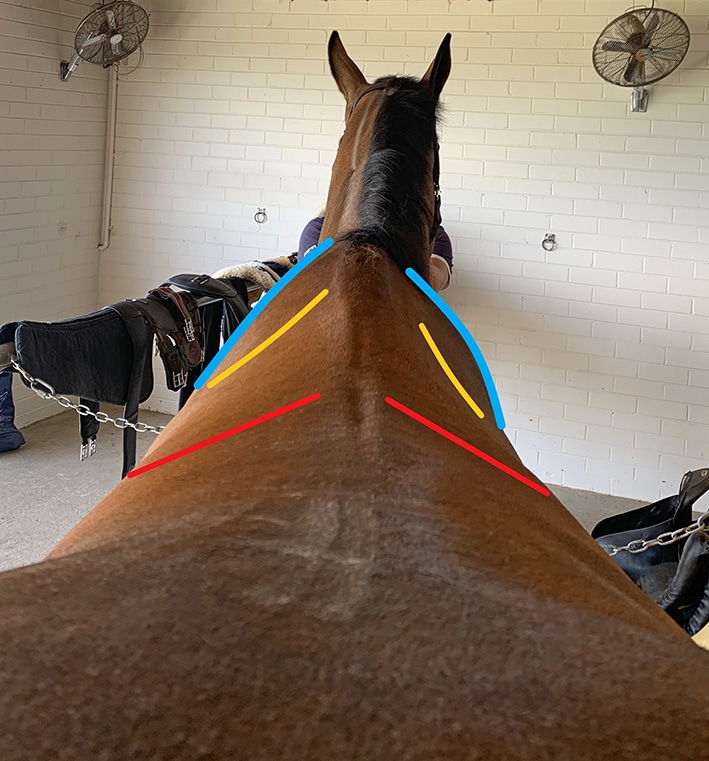
5. Clinical Case Observations and Evidence
Although direct experimental studies in horses remain limited, observational studies and practitioner case series provide strong support for these interconnections. Sharp (2022) documented
significant changes in hind limb posture and hoof angles after adjusting hoof balance, noting that upper body posture—including pelvic tilt—appeared to drive compensatory hoof capsule distortion. In several clinical cases, addressing dental occlusion concurrently with farriery produced improved symmetry and load distribu
tion.
Further, anecdotal reports by equine bodyworkers and performance veterinarians support the idea that recurrent hoof imbalances are frequently linked to head, neck, and jaw issues, and may not resolve without addressing TMJ restriction or malocclusion.
6. Implications for Gait and Performance
Performance horses exhibiting dental or TMJ-related compensation often present with:
Asymmetric stride length, particularly in trot
Difficulty bending or flexing in one direction
Inconsistent rhythm on one rein
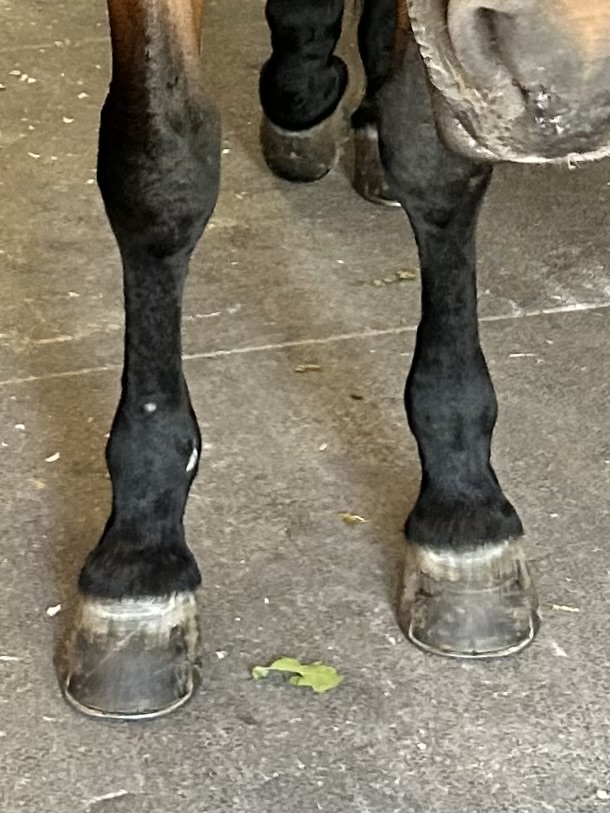
Typical mild front Foot asymmetry witnessed with TMJ dis function.
Discomfort under saddle, especially in canter transitions
Poor saddle fit due to uneven muscle development
These signs mirror those of early musculoskeletal dysfunction, yet may originate from non-orthopedic causes such as malocclusion. This highlights the need for whole-horse assessment, especially when conventional lameness diagnostics are inconclusive.
7. Integrative Management Strategies
Effective treatment of dental-related postural disorders requires multidisciplinary collaboration. Key components include:
Equine dentistry: Routine occlusal balancing, correction of wave mouth, hooks, or shear angles, and TMJ mobilization
Therapeutic farriery: Adjustments to heel elevation, breakover, and mediolateral balance to accommodate current posture and facilitate restoration of symmetry
Bodywork and physiotherapy: To address muscular compensation and restore range of motion
Saddle fit reassessment: As compensatory changes in shoulder musculature may distort fit
Gait evaluation: Pre- and post-dental correction to assess improvements in symmetry and stride quality
8. Conclusion
The horse is an integrated biomechanical system in which dental and TMJ dysfunctions may play a significant but underappreciated role in hoof capsule distortion, gait asymmetry, and performance limitations. A growing body of clinical evidence suggests that farriers, veterinarians, and equine dentists must work collaboratively to identify and treat upstream causes of limb loading abnormalities. In horses presenting with unresolving hoof asymmetries, high-low syndrome, or altered hind limb posture, a dental examination is not just advisable—it may be essential.
References
Denoix, J.M. (2001). Functional anatomy and injury of shoulder, elbow, and forelimb muscles. AAEP Proceedings, 47, 272–281.
De Laat, M.A., McGowan, C.M., & Sillence, M.N. (2015). Equine endocrinopathic laminitis: comparative evidence and the pathophysiology of obesity and insulin resistance. The Veterinary Journal, 203(3), 252–257.
Gross, M.E. & Mayhew, I.G. (2012). Cranial nerve anatomy and disorders. Equine Neurology, 2nd ed. Wiley-Blackwell.
Iadarola, A., Manfredini, D., & Perinetti, G. (2021). Postural load and body balance in patients with temporomandibular disorders: an overview of recent insights. Journal of Oral Rehabilitation, 48(8), 867–875.
Manfredini, D., Castroflorio, T., Perinetti, G., & Guarda-Nardini, L. (2009). Dental occlusion, body posture and temporomandibular disorders: where we are now and where we are heading for. Journal of Oral Rehabilitation, 36(1), 75–82.
Myers, T.W., & Hálasz, J. (2019). Anatomy Trains for Horses. Lotus Publishing.
Pfau, T., Spence, A.J., Starke, S.D., Ferrari, M., & Wilson, A.M. (2009). Limb coordination and variability in the stride pattern of sound horses at trot. Journal of Experimental Biology, 212(4), 546–553.
Sharp, Y. (2022). Effects of Changing Dorso-Plantar Hoof Balance on Equine Hind Limb Posture. Animals, 12(23), 3275.
van Weeren, P.R., Pfau, T. (2018). Gait analysis in the horse: History, challenges, and future directions. Equine Veterinary Journal, 50(5), 564–568.

